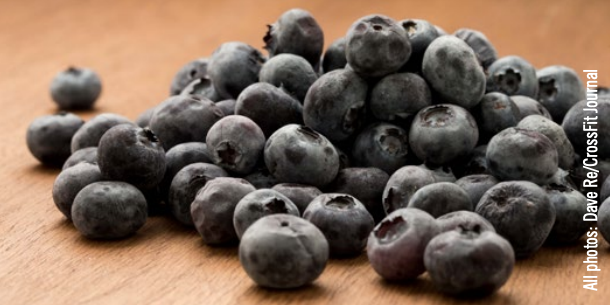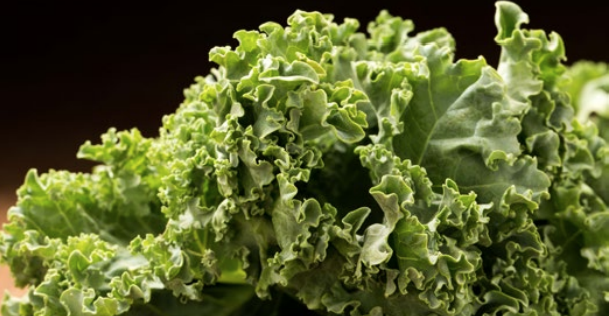Whole, unprocessed carbohydrate sources have significant health and performance benefits that might go unnoticed with macronutrient counting. For example, a doughnut and an orange can both provide the carbohydrate grams one needs, but other constituents should be considered. Even honey has more health value compared to table sugar due to the vitamins and minerals it contains. This brief describes some of the factors to consider when selecting carbohydrates, including total carbohydrate grams. While the brief is not meant to be exhaustive, this information can help someone make more optimal choices based on needs and goals.
When Selecting a Carbohydrate, Consider These Components:
• Total carbohydrate (for body composition)
• Non-caloric constituents (for health)
• Fiber (for satiety)
• Glucose vs. fructose (for recovery)
Total Carbohydrates and Body Composition
The first consideration is how many grams of carbohydrate are in the selected portion and what percentage of your daily allotment this total represents. Consistently overeating carbohydrates, regardless of the source, can stymie health and performance goals. (Consumption of too much protein and fat will also affect health and performance: The body preferentially uses carbohydrates and proteins for energy, with fat being stored until the carbohydrate and protein have been metabolized.) A bottle of juice can often have 50-plus grams of carbohydrate, which might represent a very high percentage of daily intake for someone who is aiming for 150 total grams in a day. A simple question can help with selections: “Do I want this food to represent X percent of my carbohydrate allotment for the day?”
Non-Caloric Constituents and Health
Micronutrients (vitamins and minerals) and phytonutrients (plant-based compounds believed to promote health) do not provide significant calories but have long-term beneficial effects on health and performance. Bruce Ames has put forth a “triage” theory relative to chronic disease: Vitamins and minerals in short supply (i.e., a deficiency) will be preferentially used for immediate needs at the expense of longer-term health. This provides a rationale for eating nutrient-dense foods even when current health and performance markers are favorable.
A total of 13 vitamins (water and fat soluble) and 14 minerals (macro and trace elements) are required by humans. These include micronutrients such as magnesium for ATP production, iron for oxygen delivery and vitamin E for its antioxidant capacity. Phytonutrients such as resveratrol in wine and curcumin in turmeric have been linked to antioxidizing and anti-inflammatory effects. Thousands of phytonutrients exist, with the effects and potency of many unknown. The closer a food is to its natural form, the higher the concentration of micronutrients and phytonutrients. Industrial processing strips these elements and potentially adds dyes and chemicals with unknown long-term effects. Processing typically also adds “empty calories” — such as more sugar — without micronutrients and phytonutrients. The empty calories represent a lost opportunity to maximize health.

Fiber and Satiety
Fiber is non-digestible and therefore sometimes subtracted from carbohydrate totals. However, fiber is broken down in the small intestine and used by bacteria therein (and therefore also associated with health).
One should decide to consistently count fiber toward carbohydrate grams or leave it out, but note that fiber also helps with satiety. This is in part due to fiber’s slowing of the digestion process and blunting of the insulin spike (and subsequent crash), but it is also because high-fiber foods are not as carbohydrate dense. This means one can eat a greater volume of high-fiber foods compared to low-fiber foods, thereby feeling more full. For example, about 5 cups of broccoli are equal to 2 cups of halved strawberries or half a cup of rice in terms of total carbohydrate grams.
The slowing of the digestion process also means people looking for fast-absorbing carbohydrates (for purposes such as recovery, below) should avoid fiber.
Recovery: Glucose Vs. Fructose
Although this explanation is a bit simplistic, it will suffice for our purposes: Dietary carbohydrates become either glucose or fructose for metabolism. Plant-based foods — specifically vegetables (green and root), legumes, nuts and grains — are primarily chains of glucose molecules linked together in various ways (e.g., cellulose and starch).
Fruit contains fructose and glucose in approximately equal proportions. This is why fresh fruit and table sugar are similar: Essentially, they both contain 50 percent fructose and 50 percent glucose, with some variation based on source. Fruit and foods with added sugar contain fructose. Generally, everything else is glucose (or converted to glucose; i.e., galactose in dairy).
The body handles glucose differently than fructose. Those looking for quickly absorbed carbohydrates in the post-workout window—either for the insulin spike to promote anabolism and/ or to maximally refill muscle glycogen (needed for high-intensity efforts)—should avoid fructose. Fructose neither causes an insulin spike nor refills muscle glycogen but is sent directly to the liver, where it fills liver glycogen or is converted to fat.
Post-workout nutrition is low priority for the recreational CrossFit athlete working out once a day. For this type of athlete, the potential gains from post-workout nutrition are easily surpassed by greater attention to the workout itself and nutrition throughout the day. The greater an athlete’s volume, the greater the need to dial in post-workout nutrition, largely because of the decreased time for the body to refuel with regular meals for the next session.

Choosing the Most Optimal
While spinach and kale are low in carbohydrate load, high in fiber, and offer a dose of vitamins, minerals and phytonutrients, they might not be the most optimal choices at all times.
For example:
• Variation: The greater the diversity in one’s diet, the greater the diversity in the micronutrients and phytochemicals consumed. It is best to rotate whole food sources to maximize coverage across all nutrients.
• Realistic: Excessive consumption of (green) vegetables to meet carbohydrate needs is uncomfortable at best, if not impossible or even stressful for the digestive system (assuming consumption of more than 100 grams of carbohydrates per day).
• Mass gain/compressed feeding window: Those looking to gain weight might specifically try to avoid fiber and target carbohydrate-dense foods simply to achieve daily targets. Others might employ the same strategies when eating in a compressed window (e.g., fasting).
• Performance: Athletes might find increased performance when incorporating lesser-quality sources specifically near workout times. Quickly absorbed nutrients can aid the recovery process. This is more appropriate for someone doing multiple sessions a day, endurance athletes, and/or individuals with the more important aspects of their diet already dialed in (such as consistently eating quality foods in known quantities).
• Enjoyment: Many people find enjoyment in some treat that cannot be justified based on its ingredients. And that’s OK! Dietary indiscretions can serve as sources of motivation for adherence and can be part of social enjoyment.
Overall, various carbohydrate sources can be “optimal” in different contexts based on these factors. It is generally best to select the majority of one’s carbohydrates from a wide variety of whole, unprocessed foods. These foods are the most nutrient dense and offer an array of nutrients that can optimize long-term health and performance, but they are not necessarily calorically dense and often inadvertently reduce total caloric intake by making people feel full. However, individuals can optimize choices to meet needs and even fit nutrient-poor and/or carbohydrate-dense items into a varied diet based on whole foods. The “right tool” can be selected for the right job without blanket descriptions of “good” or “bad” for specific carbohydrates.
Originally published in October 2016 in the CrossFit Journal.